Access to the session videos is not limited only to developers in Apple's paid programs; this year, the company is making them available to anyone who has signed up in any of its developer programs.
This year also marks the first time that the company has quickly made those videos, along with accompanying PDF presentation slides and sample code, accessible to both WWDC attendees and to its other developers who weren't able to attend the event, for free.
Videos are distributed in iTunes in both standard definition and HD, and support playback on "your Mac, iPhone, or iPad to watch anytime, anywhere," Apple's developer site states.
Last year, Apple charged developers who didn't pay for a WWDC ticket $500 to access the session videos. Those charges are being waived, likely in part because it is now so difficult to accommodate everyone who wants to buy a ticket.
Chief executive Steve Jobs noted on stage during the WWDC keynote that the San Francisco Moscone West convention center was the largest convenient venue Apple could find, and acknowledged it simply wasn't big enough to handle more than about 5,200 attendees over the week-long event, extending an apology to those who weren't able to get a ticket before the event sold out.
One risk to making its confidential WWDC content widely available to all its developers is the certainty of leaks. One of the first was the bizarrely veiled revelation that iPhone 4 would pack twice as much RAM as existing generations of iOS devices, a fact Jobs intentionally failed to mention in his keynote presentation listing the new smartphone's notable hardware features, such as its more esoteric new gyroscope.
The site Macerkopf.de published a screen shot of a WWDC video officially verifying the larger 512RAM capacity of iPhone 4 (below).
Jobs' iPhone 4 keynote must have been the first time in the history of computing where a new device was launched without even any mention of its much larger internal memory capacity, which is usually the first thing a company touts in a new or updated product, regardless of whether the detail might make any actual difference in performance.
In the case of iPhone 4, having double the RAM is expected to make a major improvement in the functionality of the device. Jobs' decision to hide this improvement from the pre-release public indicates both the company's hyper-secretive effort to keep iPhone 4 ahead of rivals and perhaps Jobs' contempt for the tech world's fascination with often nearly meaningless hardware specifications over real world usability and excellent design, a problem that has longed dogged both Jobs' and Apple's historical products.
 Prince McLean
Prince McLean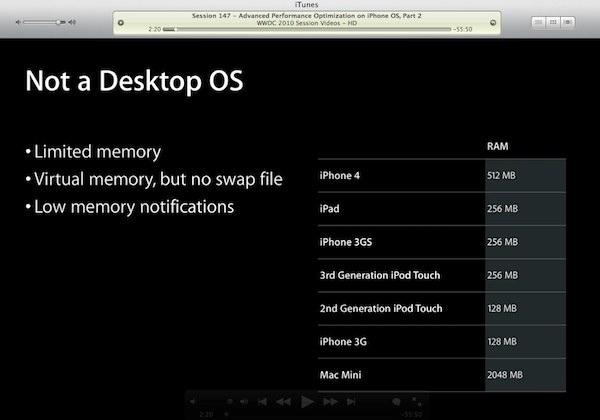

-m.jpg)





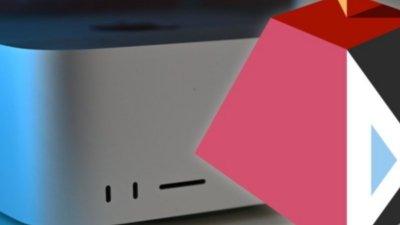
 Malcolm Owen
Malcolm Owen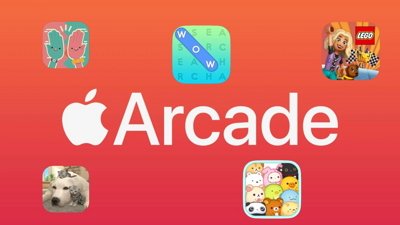
 Amber Neely
Amber Neely
 Andrew Orr
Andrew Orr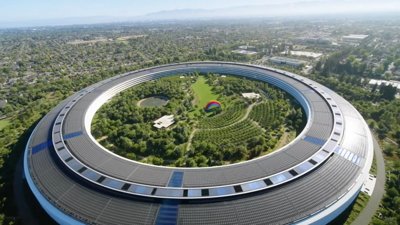
 Wesley Hilliard
Wesley Hilliard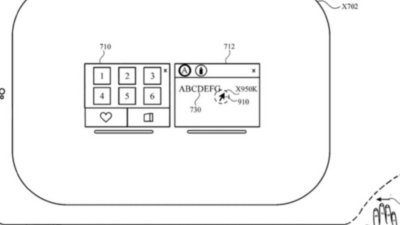
 William Gallagher
William Gallagher


 Sponsored Content
Sponsored Content









10 Comments
Wow. Not to rain on anyone's parade, but AI seems to be getting news especially slow this past week. It seems like every story has been at least 8-48 hours late. I know that AI likes to make sure stories are legit and provide a nice, long wrapper for the story, but it's just a bit of a downer to me that everything's pretty much played out by the time it gets here.
Btw, you did have some good stuff in your analysis in this article, but it's pretty rare to see.
/insert unfortunately disturbing quote about how some articles are as slanted as on CNN or FOX news. I like my content on a balanced diet.
Nice, are the 2009 Snow Leopard WWDC sessions also free? Link?
512MB RAM - now officials - nice.
Coming from a first generation iPhone to this new iPhone 4 will be like a breath of fresh air. As the OS got more and more "full" the phone got gradually slower and slower. This will be like getting all that speed back with all the additional functionality. Yes.
Two things I wanted in iPhone 4 was faster and physically smaller. I got both.
I personally thought the 3G and the 3G S were physically too large in the hand. Slightly too wide and a little too thick to be comfortable. In comparison the 2G iPhone was a nicer structure in every way. Nicer feel and thinner and fit the hand better. I think this new iPhone is perfect physically for my tastes. Android phones are getting larger and I thought the 3G S was already too large. Funny that. I think it goes to show what these companies [HTC and the like] think the average person wants. If they wanted to move units and make some real money they'd have focused on more stuff like Apple did. The iPhone 4 is genuinely awesome.
Jobs' iPhone 4 keynote must have been the first time in the history of computing where a new device was launched without even any mention of its much larger internal memory capacity, which is usually the first thing a company touts in a new or updated product, regardless of whether the detail might make any actual difference in performance.
In the case of iPhone 4, having double the RAM is expected to make a major improvement in the functionality of the device. Jobs' decision to hide this improvement from the pre-release public indicates both the company's hyper-secretive effort to keep iPhone 4 ahead of rivals and perhaps Jobs' contempt for the tech world's fascination with often nearly meaningless hardware specifications over real world usability and excellent design, a problem that has longed dogged both Jobs' and Apple's historical products.
I agree. For too long people have tried to apply the PC mentality to handheld devices. Just like the hot-rod community, they do want to know what's under the hood but in the end most people just cares if it gets you from point A to point B.
Even though the iPhone may have an 800mhz (??) A4 chips vs. the iPad's 1GHZ (??) in the end, if they both do the job smoothly, most people don't really care what's under the hood. And I'm fine with that. I think we're at a point where hardware is not the defining issue anymore. Unlike Android, iOS works well with the hardware so what's under the hood is irrelevant if it all works well.
Nice, are the 2009 Snow Leopard WWDC sessions also free? Link?
Just the 2010 WWDC videos. Available to developers only.